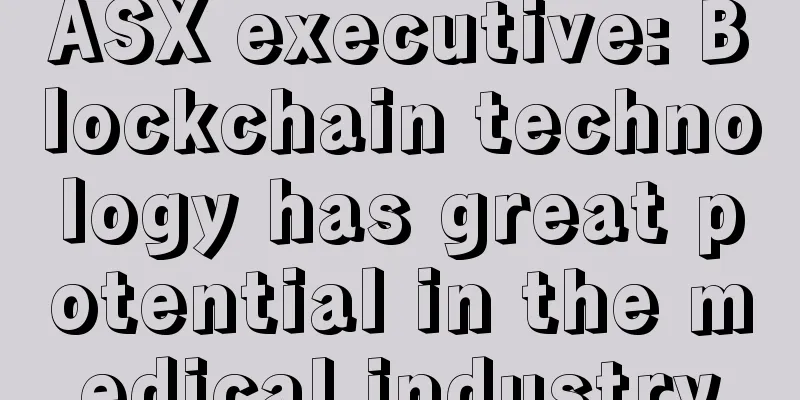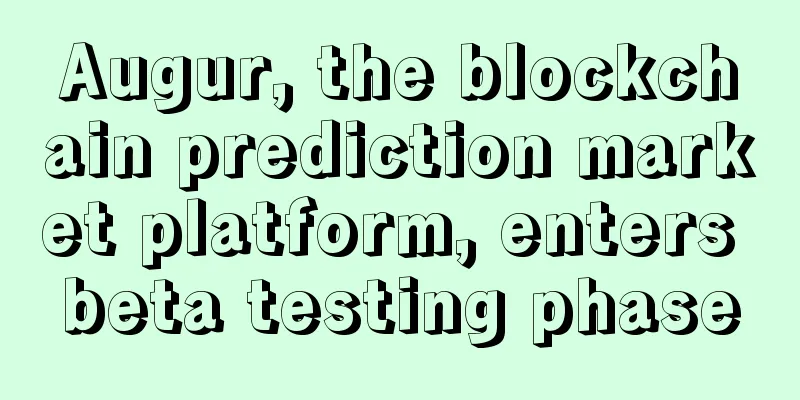ASX executive: Blockchain technology has great potential in the medical industry

|
A senior official of the Australian Stock Exchange (ASX) announced support for the application of blockchain in the medical field. The GovInnovate Innovation Summit was held in Canberra, the capital of Australia yesterday. Tim Hogben, head of operations at the Australian Stock Exchange, expressed support for blockchain technology use cases at the meeting. Hogben firmly believes that blockchain can improve the efficiency of medical data collection and verification. He said:
It’s worth noting that Hogben is not the first to suggest using distributed ledger technology for medical record storage and collection. Researchers from the MIT Digital Currency Initiative recently published a report (download the full text of the report). The report introduces a technical prototype MedRec that is used to solve similar problems. As a blockchain medical record use case, MedRec is well-known in the blockchain community (although there are also many opponents). Hogben’s remarks on behalf of the Australian Stock Exchange are significant as the agency is developing an efficient blockchain-based equities clearing and settlement platform. Digital Asset Holdings (DAH), led by Blythe Masters, has received support from many of the world's top financial institutions, including the Australian Stock Exchange, which has publicly expressed its interest in investing in blockchain projects and believes in the potential of the technology. However, modernizing the process of sharing and tracking medical records is difficult because medical records around the world are managed by different institutions in different regions, and each institution has its own unique way of uploading and storing data. There have been many projects aimed at creating a unified system before, but most of them have failed. For example, the UK once tried to modernize and centralize its national health service (NHS), but the project eventually became a "bottomless pit" due to the increasing funding required, and the government lost nearly 10 billion pounds, and the project was abandoned. |
>>: How Bitcoin Protects Against Geopolitical Risk
Recommend
Japanese cryptocurrency startup Orb raises $2.3 million in funding
Tokyo-based startup Orb, which is also backing a ...
How is the fortune of people with cinnabar mole born in the year of the Tiger in 2019?
Everyone has moles on their bodies to a greater o...
Is it good for a woman to have hanging needle lines on her face? What does hanging needle pattern mean?
In traditional physiognomy culture, faces are divi...
How to tell official luck from facial features
In physiognomy, we can see a person's career ...
Face analysis: Which job is best suited for you based on your face shape
Face analysis: Which job is best suited for you b...
Palmistry characteristics of strong relationships with the opposite sex
Palmistry characteristics of strong relationships...
Do men with long upper bodies and short legs have no luck in love?
1. Men with long upper bodies and short legs are ...
A heartless man is born to be heartless.
In the world of love, both men and women are very...
Exclusive: Sichuan and Yunnan power systems crack down on direct power supply mining farms
Wu said blockchain has learned exclusively that t...
Is it true that women without career lines on their palms are not suitable for starting a business?
Is it good for a woman not to have a career line ...
Bitcoin, block size, and future transaction models
As a London-based online trading company, First G...
People with hump noses have a rough fate. Do people with hump noses really have a bad fate?
Do people with hump noses have a rough fate? From...
58 bitcoins were lost, but the exchange only compensated 8.7 + a power bank?
Bitcoin and Litecoin have attracted the attention...
Bank for International Settlements: COVID-19 crisis will drive development of global central bank digital currencies
The Bank for International Settlements expects th...
What will happen to people with phoenix eye patterns on their hands?
Everyone has unique palm lines, and different lin...


![[Update] Grayscale once again increased its holdings by 3,893 Bitcoins and 24,955 Bitcoin Cash](/upload/images/67e692fd5ed8a.webp)






